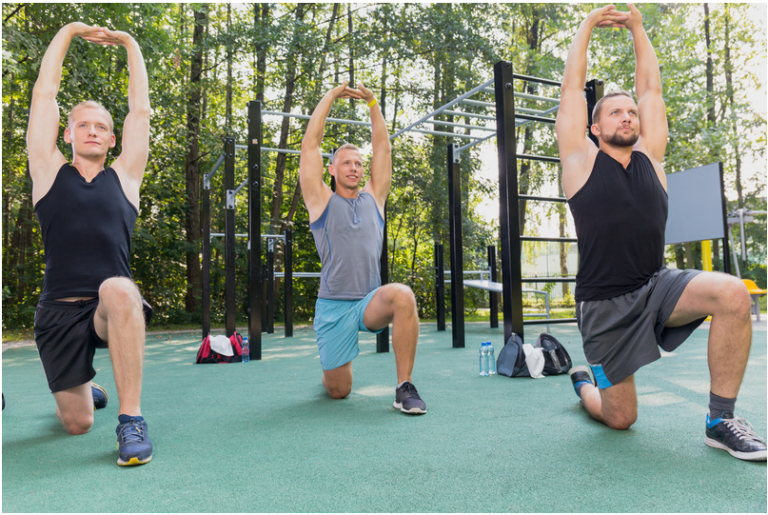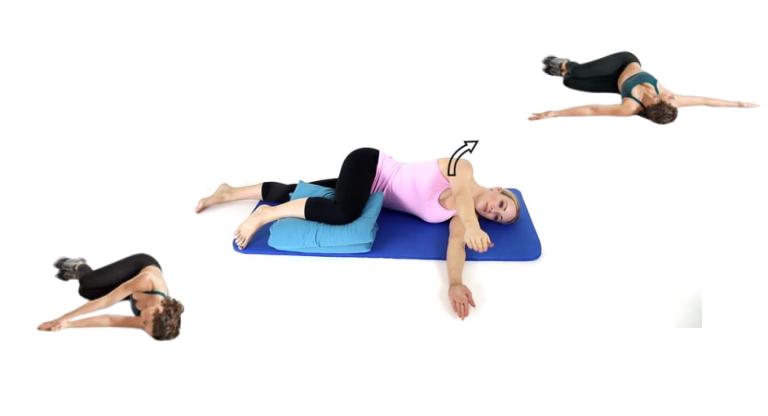
Calories Burned by Stretching Calculator

Stretching is an essential component of any exercise routine. It helps to improve flexibility, reduce the risk of injury, and increase blood flow to the muscles. However, many people are unaware that stretching can also burn calories. In fact, stretching can be an effective way to burn calories and lose weight.
If you are interested in learning more about the calories burned by stretching, you may want to use calories burned stretching calculator. This tool can help you estimate the number of calories you burn while stretching based on factors such as your weight, age, and gender. By using calories burned by stretching calculator, you can get a better understanding of how many calories you are burning during your stretching routine.
Advanced Stretching Calories Burned Calculator
Understanding Calories Buned While Stretching
Stretching is a low-intensity physical activity that can help improve flexibility, reduce muscle soreness, and prevent injuries. It is also an effective way to burn calories. In this section, I will explain how to calculate calories burned while stretching and provide some insights into the limitations of the method.
How stretching can help you lose weight and improve your health? Use our calories burned by stretching calculator to see how many calories you can burn and how stretching can increase metabolism.
Formula
The formula to calculate calories burned while stretching is:
Calories burned per minute = (MET x body weight in Kg x 3.5) ÷ 200
where MET is a measurement of the energy cost of physical activity for a period of time. The MET value for stretching is 2.3, which means that it burns 2.3 times more calories than resting. The formula takes into account the body weight of the person and the intensity of the activity.
For example, a person who weighs 150 pounds and stretches for 30 minutes burns approximately 85 calories [(2.3 x 68.04 x 3.5) ÷ 200 x 30]. However, this is just an estimate, and the actual number of calories burned may vary depending on individual factors such as age, gender, and fitness level.
MET Values and Their Limitations
MET values are widely used in exercise science to estimate the energy cost of physical activities. However, they have some limitations that should be taken into account when using them to calculate calories burned while stretching.
Firstly, MET values are based on the average energy cost of an activity for a group of people. They do not take into account individual differences in metabolism, body composition, and fitness level, which can affect the actual number of calories burned.
Secondly, MET values do not reflect the intensity of an activity accurately. For example, stretching can be done at different intensities, from gentle to vigorous. The MET value of 2.3 is based on a moderate intensity of stretching, which may not apply to all individuals.
How do static stretches compare in terms of calorie burning?
While the formula to calculate calories burned while stretching provides a useful estimate of the energy cost of the activity, it should be used with caution. Individual factors such as age, gender, and fitness level can affect the actual number of calories burned, and the MET value of 2.3 may not reflect the intensity of stretching accurately. Nonetheless, stretching is a great way to burn calories and improve flexibility, and it should be included in any fitness routine.
Furthermore, when examining the calorie-burning potential of static stretches, it is important to consider the impact of body weight on energy expenditure. For instance, a 155-pound individual can burn approximately 149 calories in a 30-minute stretching session, while a 120-pound person may only burn 120 calories during the same duration. Conversely, a 200-pound individual can burn around 178 calories in that time frame. This variation underscores the influence of mass on calorie burning and emphasizes that larger individuals tend to expend more energy during stretching activities.
Starting with gentle stretches, such as yoga poses, can help gradually prepare the muscles for more challenging stretches. It is crucial not to force a stretch, particularly using hands or workout equipment to push the body beyond its natural limits. Remember, if a stretch feels uncomfortable or impossible without assistance, it is likely not a safe or beneficial stretch for your body. By incorporating these safety tips into your stretching routine, you can burn calories, improve flexibility and reduce the risk of injuries.
Calculating Your Burn
As we know, stretching is an important part of any workout routine, and it is also an excellent way to warm up before any physical activity. But did you know that stretching can also help you burn calories? Yes, that’s right! Stretching can help you burn calories and lose weight, and there are tools available to help you calculate the calories burned while stretching.
One such tool is the calories burned stretching calculator. This calculator uses your weight, the duration of your stretching routine, and the intensity of your stretching routine to calculate the number of calories burned. The calculator uses the MET (Metabolic Equivalent of Task) value to estimate the energy cost of physical activity for a period of time. The formula used by the calculator is:
Calories burned per minute = (MET x body weight in Kg x 3.5) ÷ 200
To use the calculator, you need to enter your weight in kilograms and the duration of your stretching routine in minutes. The calculator will then estimate the number of calories burned based on the MET value of the stretching activity.
Example
Let’s say I weigh 70 kilograms, and I stretch for 30 minutes. I use the calories burned stretching calculator and find that the MET value of my stretching activity is 2.5. The calculator then estimates that I have burned approximately 105 calories during my stretching routine.
It’s important to note that the number of calories burned while stretching varies depending on the intensity of the stretching routine and the weight of the individual. A person who weighs more will burn more calories than a person who weighs less during the same stretching routine.
The calories burned stretching calculator is an excellent tool to estimate the number of calories burned during a stretching routine. It’s important to remember that the number of calories burned varies depending on the intensity of the stretching routine and the weight of the individual.
FAQs: About Calories Burned by Stretching Calculator
How can one incorporate flexibility training into a well-rounded exercise program?
Incorporating flexibility training into a well-rounded exercise program involves including both static and dynamic stretches. Aim to stretch every major muscle group at least three times per week to improve flexibility and range of motion. Incorporating various stretching exercises for different muscle groups can help preserve your optimal range of motion. Following guidelines from reputable sources such as the International Journal of Sports Physical Therapy, it is recommended to establish a comprehensive flexibility training routine within your exercise program.
How often should major muscle groups be stretched to maintain an optimal range of motion?
To maintain an optimal range of motion, stretching every major muscle group at least three times per week is recommended. By including stretches for all major muscle groups in your routine on a regular basis, you can help preserve and improve flexibility, which is essential for maintaining an optimal range of motion in your joints and muscles. It is important to prioritize consistency and variety in your stretching routine to ensure that all major muscle groups are adequately stretched to support overall flexibility and mobility.
What are dynamic stretches, and how many calories do they burn?
Dynamic stretching goes beyond holding muscles in a static position; instead, it focuses on using momentum, agility, and speed to stretch muscles and connective tissue before engaging in physical activities like competition or high-intensity training sessions. Examples of dynamic stretching exercises include arm circles, body-weight lunges, and high-knee hugs. Dynamic stretching is similar to callisthenics or body-weight exercises and can burn approximately 135 to 200 calories per half hour, depending on an individual’s weight.
What is the average calorie expenditure from stretching for various durations?
Stretching is a low-intensity exercise that can help burn calories. On average, a person can burn 80–120 calories for every 30 minutes of stretching. For example, a 150-pound person can burn around 150–200 calories per hour of stretching. However, the actual number of calories burned may vary depending on factors such as age, gender, body weight, and the type of stretching performed.
Can the number of calories burned during a stretching session be calculated per minute?
Yes, the number of calories burned during a stretching session can be calculated per minute. The formula to calculate the calories burned per minute for a 150-pound person is (body weight in kg x MET x 3.5) / 200. For example, a 150-pound person burns around 2.7 calories per minute of stretching.
How does the duration of stretching impact calorie consumption?
The duration of stretching can impact calorie consumption. The longer the duration of stretching, the more calories you can burn. However, it is important to note that stretching for too long may lead to muscle fatigue and injury. Therefore, it is recommended to perform stretching exercises for a maximum of 30 minutes per session.
Is there a difference in calories burned between dynamic and static stretching?
Yes, there is a difference in calories burned between dynamic and static stretching. Dynamic stretching involves movements that increase the range of motion and prepare the body for physical activity. This type of stretching can burn more calories than static stretching, which involves holding a stretch for a certain period of time.
What are the potential serious injuries that can result from overstretching?
Potential consequences of overstretching can include muscle strain, injury, and decreased flexibility. Overstretching occurs when a muscle is stretched beyond its normal range of motion, leading to microtears in the muscle fibres. This can result in pain, swelling, and decreased muscle function. In severe cases, overstretching can cause muscle tears or sprains, which may require medical attention and rehabilitation.
Moreover, it is crucial to recognize that overstretching can affect one’s physical well-being. The potential ramifications of overstretching extend beyond immediate discomfort, encompassing a spectrum of injuries that range from minor strains to more severe muscle tears. The damage caused by overstretching can result in pain, swelling, and inflammation, hindering optimal muscle function and flexibility.
Furthermore, overstretching can significantly impact an individual’s ability to engage in regular physical activity. The discomfort and potential injuries stemming from overstretching may discourage individuals from exercising, ultimately leading to muscle stiffness and adopting a sedentary lifestyle. By understanding the diverse consequences of overstretching, individuals can prioritize safe stretching practices to mitigate the risk of injury and promote long-term muscle health.
Does the intensity of stretching affect the total calories burned?
Yes, the intensity of stretching can affect the total calories burned. Stretching with more intensity can help burn more calories. However, it is important to avoid overstretching, which can lead to muscle strain or injury. It is recommended to perform stretching exercises at a comfortable intensity level.
In what ways does stretching qualify as a calorie-burning exercise?
Stretching is a low-intensity exercise that can help burn calories. It increases blood flow and oxygenation to the muscles, which can help boost metabolism and calorie burning. Additionally, stretching can help improve flexibility, range of motion, and posture, which can lead to improved physical performance and reduced risk of injury.



